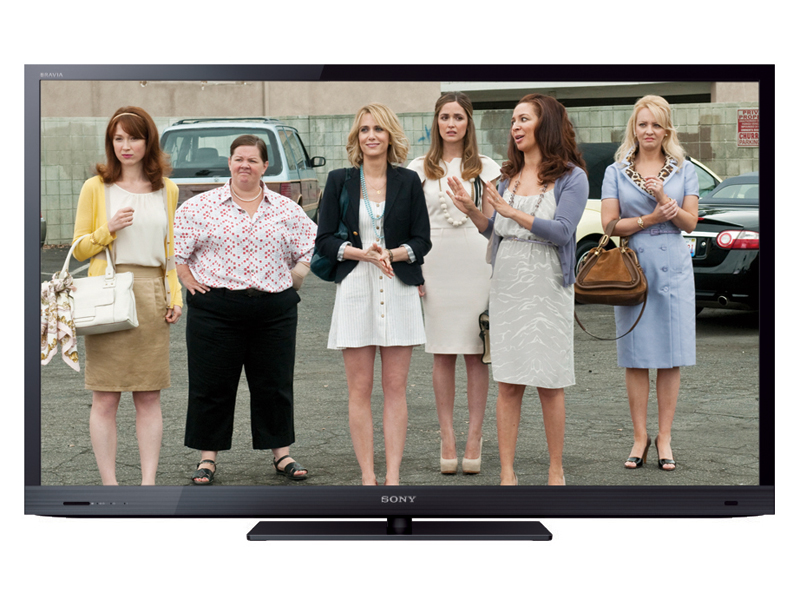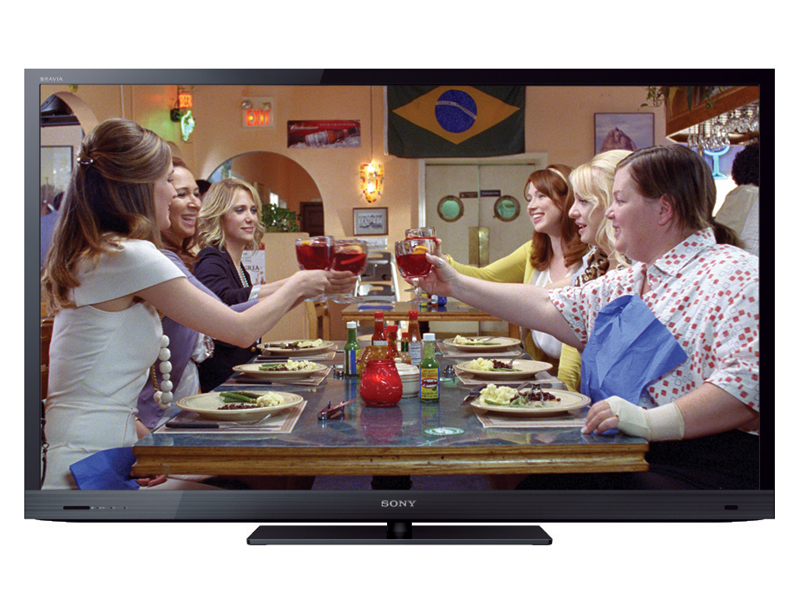Why you can trust TechRadar

Sony TVs have long enjoyed an enviable reputation for picture quality. While the brand may have lost some ground to the competition in recent years, 2010 saw a bit of a renaissance.
To a degree, that improvement holds true with the KDL-40EX724. This set sports a fair selection of high-powered picture-polishing silicon. Unlike cheaper screens in the EX range, this model sports Motionflow XR200, Sony's really rather effective fast frame-rate technology. Without Motionflow, the native motion resolution of this panel is around 650 lines – quite a drop from the 1,080-line clarity you enjoy when everyone is standing around really still.
With Motionflow XR200 we get four modes to play with: Clear, Clear Plus, Standard and Smooth. Interestingly, neither Standard nor Smooth are massively successful. Clear, however, retains a full 1,080 lines of fleet-footed clarity without introducing any significant motion artefacts of its own. We would suggest this is the mode to choose when watching sport. The detail boost it gives makes a massive difference when following the action.
A test pattern that comprises scrolling English and Japanese text confirms just how effective Motionflow is. At 6.5 ppf (pixels per frame) we noted no loss of detail at 100-, 50- and 30 per cent luminance. Even at a faster 2.5ppf, there's only marginal bleariness, most noticeable when luminance drops to 30 per cent. This can be considered a fine performance.
Of course, you're welcome to try this fast frame-rate processing when watching movies, but be aware that the speedy refresh rate can give films an unpalatable video sheen. Our American cousins have taken to calling this the 'Soap Opera effect' and it robs a movie of its cinematic texture. If you don't like it, simply switch off Motionflow when settling down with a bag of popcorn.
Black levels are deep and contrast is dramatic. Greyscale tracking is on the money. A demanding test disc sequence, shot around the Tokyo Tower at night and featuring dynamic highlights against a black sky, played out with smooth blacks and decent shadow detail.
Even though the set's edge-lit LED backlight is somewhat uneven, this doesn't spoil the consistency of the image. While there is evidence of light pooling in the corners of the screen, it's not at an intrusive level.
The picture presets tend to over-crank sharpness, which needs to be taken back to around 22 per cent for a naturalistic, but crisp, image.
To guarantee that you make the most of the screen's image quality, ensure that you turn Off Auto Display Area. If you don't, the TV overscans and you'll lose picture information behind the bezel.
While the KDL-40EX724 generally pleases with its hi-def performance, it disappoints with 3D in equal measure.
Normally, a 3D screen receives demerits if it suffers from excessive crosstalk (double imaging caused by an overlap between left and right eye images). However crosstalk (of which there is plenty) is the last thing wrong here.
Three-dimensional images suffer from huge parallax problems; items that should sit in the background are brought incongruously forward.
A poster on the wall of the Antartic survey station featured at the beginning of Monsters Vs Aliens floats away from the wall and sits on the zero parallax plane; structural elements of the long stasis chamber when Jake Sully awakens from animation at the start of Avatar don't recede into the background as they should, but pop defiantly forward. There is also noticeable solarisation around objects, with bizarre colour shifts; images stutter and judder. The 3D picture on this TV is, in no short order, unwatchable.
The screen also offers 2D-to-3D conversion. This feature is designed to add realistic depth to any regular broadcast or DVD content, but you can also three-dimensionalise video games from a connected console (PS3, Xbox 360 or Wii). The resulting effect should be fun: here, it's anything but.
Current page: Sony KDL-40EX724: Picture
Prev Page Sony KDL-40EX724: Features Next Page Sony KDL-40EX724: Sound, value and ease of useSteve has been writing about AV and home cinema since the dawn of time, or more accurately, since the glory days of VHS and Betamax. He has strong opinions on the latest TV technology, Hi-Fi and Blu-ray/media players, and likes nothing better than to crank up his ludicrously powerful home theatre system to binge-watch TV shows.

